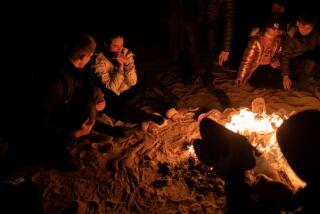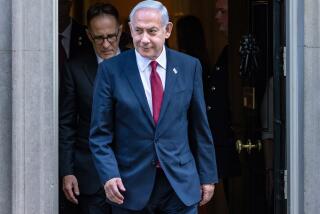By Land and by Sky: Lessons for Desert Storm II
The liberation of Kuwait was a mix of successes and failures that left many lessons for coalition forces that may be entering a Desert Storm II in the weeks ahead.
We knew how Iraq operated its air defenses in 1991, and we attacked vital communication and command nodes. Once they were isolated, individual surface-to-air missiles and aircraft were destroyed so viciously that surviving Iraqi SAM operators and fighter pilots were debilitated by shock and awe, incapable of employing their weapons effectively. Then, we flew at altitudes beyond the range of the Iraqi guns and short-range SAMs and used precision weapons to destroy many targets.
Although we ultimately forced Saddam Hussein’s troops out of Kuwait, our approach was not an effective one for changing leadership.
In Kosovo eight years later, however, we employed a strategy that targeted the economic and political power base of President Slobodan Milosevic by bombing the business interests -- such as factories -- owned by the Serb leader and his cronies. As a result, the well-being of the ethnic Albanians in Kosovo was directly linked to the well-being of the clique ruling Yugoslavia. The Serb army was defeated, but Kosovo was left intact.
A rerun in Iraq could use airstrikes and special operations teams to destroy its fiber-optic communications system, which would wreak havoc on its air defenses and on the means to deliver weapons of mass destruction and would ultimately isolate Hussein from his base of power -- the Republican Guard.
Another lesson from the Gulf War is to integrate modern air power with ground forces. In 1991, air power destroyed artillery and armor, limiting Iraq’s capacity to repel our ground forces. More than 40 Iraqi divisions were defeated with the loss of about 150 Americans, half of whom were killed by our own weapons. Recent action in Afghanistan -- when air and land forces again were closely integrated -- reaffirms the effectiveness of this approach.
In order not to leave Iraq worse off than it is today, we should use our forces efficiently: Don’t engage those elements of the Iraqi military that do not resist. In 1991, 88,000 Iraqis chose to surrender. Allow them to do so again. For our own security, advanced surveillance aircraft can monitor the movement of bypassed Iraqi units. If they move to threaten our forces, they would be put down by precision weapons.
But in any close combat, our strategy should exploit our superior awareness of the battlefield using heightened surveillance technology, and we should maneuver to avoid large-scale engagements that result in civilian devastation.
It’s certainly possible for Hussein to make a final stand by torching the Iraqi oil fields or unleashing weapons of mass destruction. We recognize the need for chemical and biological protection for our troops, and in advance of any conflict we must use broadcasts and leaflets to convey in the sternest language that Iraqis who use such weapons will suffer consequences.
We need ballistic missile defenses, and what little we have -- the PAC 3 Patriot batteries -- are in place today.
We must isolate the oil fields and convince the Iraqis in advance that their future depends on their ability to pump and sell oil.
In 1991, our military strategy was built around a single goal: Liberate Kuwait. A 2003 strategy must recognize more complex goals. We must convince the Iraqi people not to resist, but rather to assist in the removal of the current regime. This will require an early introduction of coalition ground forces, not to defeat the enemy but to demonstrate our commitment to their future.
We must keep the Iraqi people informed and reassure them that we will return their country to their control. People who have fled Iraq can communicate with the folks at home to tell them what to expect. Television, radio and leaflet messages will also be important.
Any strategy must recognize the important and difficult issues that will exist after a war. Our land forces will play a major role in areas such as providing food, water and medical care until relief agencies can take over.
There will also be an immediate need to maintain law and order to prevent criminal acts and retribution.
Air power will have the lead role in winning the conflict, but land power will have the more critical role of helping Iraq rebuild itself.
More to Read
Start your day right
Sign up for Essential California for news, features and recommendations from the L.A. Times and beyond in your inbox six days a week.
You may occasionally receive promotional content from the Los Angeles Times.






